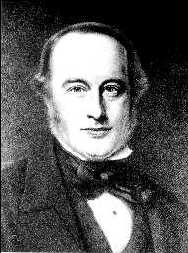The Physics of "s is one half gt 2"
This song contains five important equations from first-semester physics. The title equation, s = 1/2 gt 2, gives the distance s fallen by an object in a time t, assuming the object starts at rest and that air resistance is negligible; g is the acceleration of gravity, which is about 9.8 m/s2 on the surface of the Earth. (Note: for medium to small objects, the force of air resistance becomes important after a drop of 10 meters or less. You might be interested in my answer to the question, "What would happen if you dropped a superball off the Empire State Building".)
| The second equation in the song, PV= nRT is the "ideal gas law". It gives the relationship between the pressure P, the volume V, the number of moles n, and the temperature (measured from absolute zero) T of any gas, with the assumptions that the gas molecules only interact with each other in very short collisions, and that the volume of the gas molecules themselves is negligible compared to the total volume occupied by the gas. The constant R is the "ideal gas constant", which equals 8.31 J/mol K. The equation says that, if you start with a given container filled with gas, you can increase the pressure either by 1) adding more gas (increasing n), 2) heating the gas (increasing T), or 3) squeezing the container to a smaller volume (decreasing V). (Note: the "number of moles" is equal to the number of gas molecules divided by Avogadro's number, 6.02 x 1023.) Perhaps the most remarkable thing about this equation is that the gas pressure doesn't depend on the type of gas -- you would get the same pressure for a given number of oxygen molecules as you would for the same number of helium atoms.) Click the image at right to open a Java applet from Ohio State University that nicely illustrates this law. |  |
The third equation gives the expression for kinetic energy: KE = 1/2 mv 2, where m is the mass of a moving object and v is its velocity. Although the idea of energy is so central to our current understanding of physics, and indeed the way we think about everyday life and geopolitics, it is a relatively recent notion. The law of conservation of energy, i.e. that energy can never be destroyed, but only transformed from one form to another, was initially obscured by the common observation that things that move usually eventually come to rest, so that their energy of motion seems to disappear. We now understand that, when this happens, the kinetic energy is transformed into thermal energy through friction. However, it was not until experiments performed by the brewer James P. Joule in the early 1840s that this really became clear, and it took many years after that for the idea of energy conservation to be widely accepted in the scientific community. Read more about the history of energy here. |
|
The fourth equation
in the song gives the formula for the period (the time for a
complete swing back and forth) of a pendulum: There is a wonderful legend (apocryphal, but so what) of how Galileo discovered the lack of dependence on amplitude: "Galileo was bored. As he listened to a Mass in the drafty cathedral of Pisa in 1581, the 17-year-old student noticed something interesting. A chandelier high overhead was swaying in the breeze, sometimes barely moving and other times swinging in a wide arc. His curiosity aroused, he timed the swings with his pulse. To his surprise, it took the same number of pulse beats for the chandelier to complete one swing no matter how far it moved. The wider the swing, the faster the motion, but always in the same amount of time. So time could be measured by the swing of a pendulum -- the basis for the pendulum clock."1 The pendulum, of course, was then used to construct the first accurate clocks, which were eventually adapted for use at sea, allowing accurate navigation. |
|
The last equation in the song is Newton's second law, "force is mass times acceleration", or F = ma. This equation is really the definition of force: a force is something that, when applied to a body of mass m produces an acceleration a. In one of the best parts of the song, the professor goes on to say, "or more precisely the time derivative of the linear momentum". In fact, this is the way Newton originally stated the law -- his wording was, "The net force acting on a body is equal to the rate at which the body's quantity of motion is changing." What he called "quantity of motion" is what we now call "linear momentum" (linear as opposed to angular momentum); it is usually assigned the symbol p, and is given by p = mv. We can easily see that the two ways
of stating Newton's second law are equivalent. ("There
he goes again!") The "rate of change of " (equivalently
"time derivative of") the momentum is written Usually, the familiar F =
ma form is more convenient. However, the original form,
--WFS 8/28/05 |
References: 1 - Prof. Roger Newton, author of Galileo's Pendulum (Harvard University Press, 2004)
Back to "s is one half gt 2"main page
Back to "The Physical Revue" main page ..Return to PhysicsSongs.org main page
Background image: covers from some of Tom Lehrer's albums


